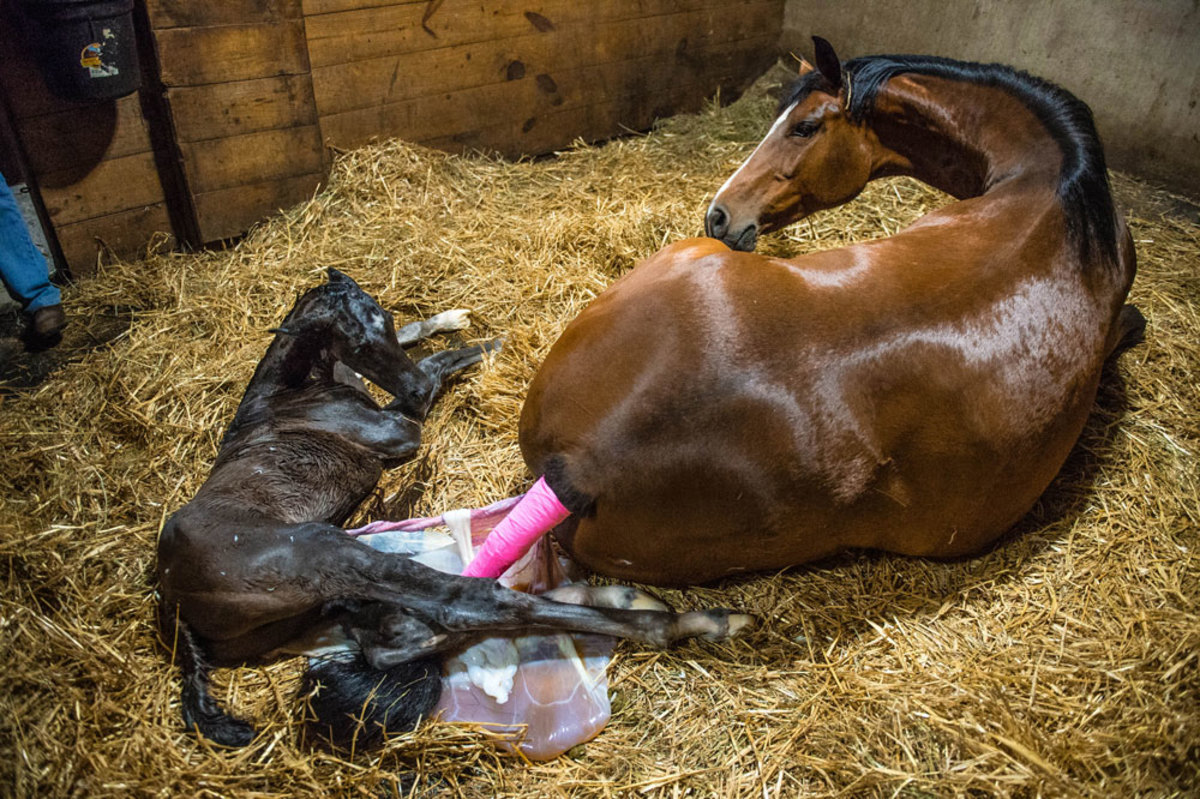
In light of the surge in Nocardioform placentitis Kentucky cases in the 2020 foaling season, experts united during the September 2020 Virtual Workshop on Nocardioform Placentitis to share their knowledge of this elusive disease. C. Scott Bailey, DVM, MS, DACT, resident veterinarian of Claiborne Farm in Kentucky and an adjunct professor at North Caroline State University’s College of Veterinary Medicine, reported that he, too, witnessed the dramatic rise in Nocardioform cases in the 156 mares he managed in 2020.
Bailey, who personally examines every placenta from every foal born on the farm, observed an increase in the number of Nocardioform cases based on gross appearance of the placenta. He noted a range in presentations, with some placentas having only small (3 cm x 5 cm) regions of mild edema and exudate and others being grossly denuded.
Bailey identifuied a total of 34 abnormal fetal membranes or aborted fetuses. He submitted 22 samples to the University of Kentucky’s Veterinary Diagnostic Laboratory (UKVDL) to confirm his clinical suspicion of Nocardioform placentitis based on his gross observations. UKVDL confirmed Nocardioform placentitis in 15 of the samples.
“Six cases diagnosed with Nocardioform placentitis at UKVDL were associated with nonviable foals, which was 3.8% of all births,” Bailey relayed.
In addition to submitting samples to the UKVDL, Bailey made smears or “touch preps” using standard microscope slides. He evaluated those touch preps on the farm and found 23 of the 31 samples were positive for Nocardioform actinomycetes.
“These are chain-forming, filamentous bacteria that have a fairly characteristic microscopic appearance and aren’t usually difficult to diagnose,” Bailey said.
Most cases of Nocardioform placentitis diagnosed by Bailey occurred in January and February, dropping markedly by April.
Foal Outcomes
Foals born from mares diagnosed with Nocardioform placentitis had shorter than average gestational lengths averaging about 6.5 days (using the assigned due date of the mare based on breeding). Those foals were also about 10 pounds lighter on average, but still deemed adequate. Further, the placental weight was only slightly increased for membranes collected from mares with Nocardioform placentitis, and no difference in perinatal diseases were identified in foals or mares from normal, healthy pregnancies versus those affected by Nocardioform placentitis.
Foaling outcomes were not closely related to the presence of Nocardioform placentitis, but did correlate to the size of the lesion.
Mare Outcomes
Bailey elected not to treat mares diagnosed with Nocardioform placentitis (unless another underlying condition such as retained fetal membranes existed). Bailey found that mares with Nocardioform placentitis had the same average time to pregnancy, 1.5 cycles, as mares without placentitis. This time to pregnancy is normal for mares bred for the first time at 30 days rather than the foal heat.
Summary
Nocardioform placentitis on the farm can usually be recognized easily by characteristic lesions of the placenta—the tan mucoid areas covering an avillous region on the ventral aspect of the placenta at or near the gravid horn. Nocardioform microorganisms—chains of filamentous rods—can be diagnosed in-house by veterinarians on a touch prep.
Post-foaling, both foals and mares tended to perform the same as unaffected horses during early development/rebreeding. No increase in neonatal disease, decrease in fertility, or increase in subsequent pregnancy loss were appreciated.
“Clinical diagnosis is pretty accurate with careful examination of the fetal membranes and cytologic examination of a touch prep can confirm Nocardioform organisms,” stated Bailey.








